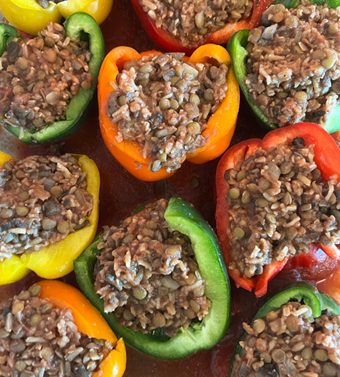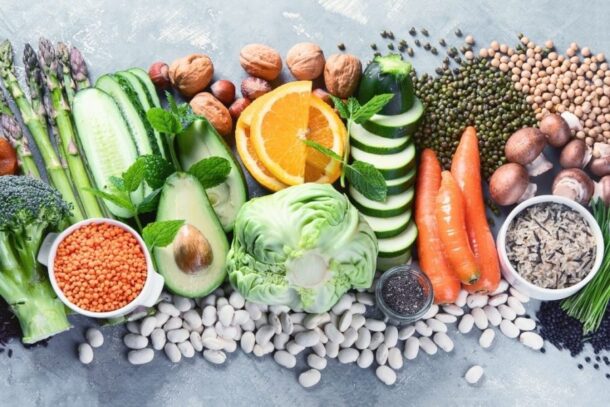Happy Thankful Thursday! Today, we’re celebrating the vibrant, versatile bell pepper – a staple in plant-based kitchens around the world.
The Rainbow of Bell Peppers
Did you know that all bell peppers start out green? At this stage, they are immature, less sweet and slightly bitter.
Depending on the variety, some green peppers will ripen directly to red, yellow or orange. Others may pass through multiple colors as they mature, but this is variety-dependent, not a universal transition. For example, some red bell peppers may briefly appear yellow or orange before turning red, but not all do.
The change in color reflects increasing sugar content and decreasing bitterness. Red bell peppers are usually the sweetest and most mature, containing nearly twice the vitamin C of green peppers and up to 9 times more beta-carotene!
A Curious Historical Fact
Here’s something fascinating that you might not know: in some regions — particularly in parts of the American Midwest and South, especially Indiana, Ohio and Illinois — older generations have referred to bell peppers as “mangoes.”
This can be confusing, since mangoes are a tropical fruit, but here’s why that happened:
In the 18th and 19th centuries, when actual mangoes (the tropical fruit) were rare and hard to import, the term “mango” came to refer broadly to pickled or stuffed produce.
Bell peppers were commonly pickled or stuffed in the same way mangoes might be preserved. So the name “mango” got transferred to them, especially when pickled.
Even after real mangoes became widely available, the regional term “mango” for bell peppers stuck around in some communities and was passed down.
Would you be interested in my stuffed pepper recipe I’m in progress on perfecting?

I started out several years ago watching Forks Over Knives, decided to “try out” the plant-based meal plan and had shockingly incredible results. I’ve never turned back. I have lost nearly 50 pounds, and that is just one side effect that me, my family, friends and clients have experienced after making the change.
Having been an incredible cook my entire adult life, I started my own personal chef service, NuYu Nourish, to extend my help to others. I interned under a celebrity chef, became a celebrity chef myself and have been expanding my reach and goals ever since! My plan follows strictly and simply those of Dr. Mcdougall, Dr. T. Colin Campbell and Dr. Esselstyn.




